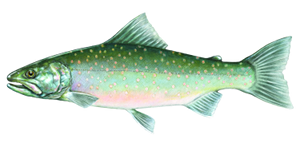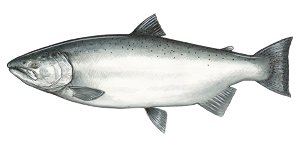Yankee Fork Side Channel Habitat Improvement
Goals
TU's goal in the Yankee Fork basin was to create side-channel rearing habitat for juvenile Chinook salmon and steelhead trout and spawning habitat for adult steelhead. Improved habitat will also benefit cutthroat trout and bull trout.
Tactics
TU and partners re-graded mounds of dredge tailings to fill remnant dredge ponds and create a functional side-channel and flood-plain. We also placed woody debris in the newly created side-channel and on the flood-plain to provide habitat diversity and complexity. The created inflow channel from the Yankee Fork provides year-around low flows and natural springtime flood flows to the channel.
Victories
The Yankee Fork was dredged in the 1940s and early 1950s, leaving lower mainstem void of habitat. Restoration efforts in that area have been limited to connection of old dredge ponds to the Yankee Fork, which was accomplished in the 1980’s. While these efforts did provide habitat for some juvenile salmonids, research showed that juvenile fish use of the channels connecting the ponds was 40 times higher than in the ponds themselves. Since that time, further restoration efforts have been prevented by what can most adequately be described as “red tape” primarily related to perceived risks of mercury mobilization. Actually breaking through the red tape and completing a project on the ground is a huge victory, and a starting point for several projects scheduled to be completed over the next five years.
Staff Contact
Author of this Page
Jerry Myers, project manager



